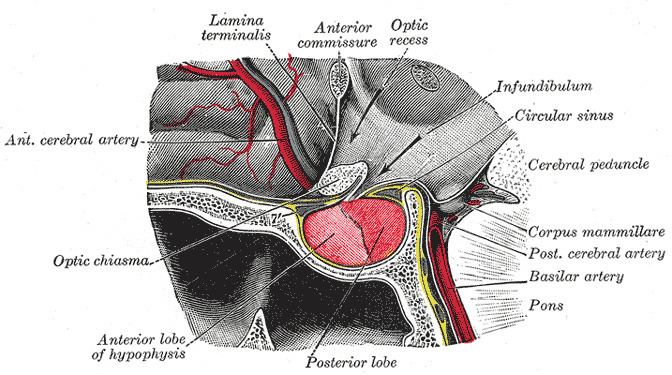Acronym(s) mmb | ||
 | ||
Components medial mammillary nucleuslateral mammillary nucleus Latin Corpus mamillare(Plural: Corpora mamillaria) MeSH A08.186.211.730.385.357.362.500 | ||
The mammillary bodies are a pair of small round bodies, located on the undersurface of the brain that, as part of the diencephalon, form part of the limbic system. They are located at the ends of the anterior arches of the fornix. They consist of two groups of nuclei, the medial mammillary nuclei and the lateral mammillary nuclei.
Contents
Neuroanatomists have often categorized the mammillary bodies as part of the hypothalamus.
It was previously also known as corpus albicans, but later this term became obsolete due to the degenerated corpus luteum also being called so.
Connections
They are connected to other parts of the brain (as shown in the schematic, below left), and act as a relay for impulses coming from the amygdalae and hippocampi, via the mamillo-thalamic tract to the thalamus.
This circuit, from amygdalae to mammillary bodies, and then on to the thalamus, is part of the larger Papez circuit.
Function
Mammillary bodies, and their projections to the anterior thalamus via the mammillothalamic tract, are important for recollective memory. The medial mammillary nucleus is mainly responsible for the spatial memory deficits that are seen in rats with mammillary body lesions.
Clinical significance
Damage to the mammillary bodies due to thiamine deficiency is implied in pathogenesis of Wernicke-Korsakoff syndrome. Symptoms include impaired memory, also called anterograde amnesia, suggesting that the mammillary bodies may be important for memory. Lesions of the medial dorsal and anterior nuclei of the thalami and lesions of the mammillary bodies are commonly involved in amnesic syndromes in humans.
Mammillary body atrophy is present in a number of other conditions, such as colloid cysts in the third ventricle, Alzheimer’s disease, schizophrenia, heart failure, and sleep apnea. In spite of this the exact function of the mammillary bodies is still not clear.
